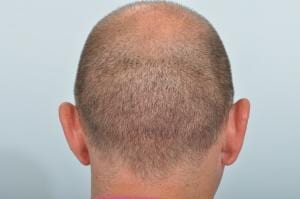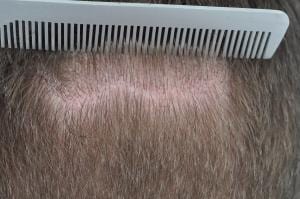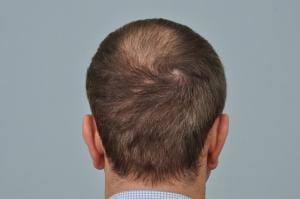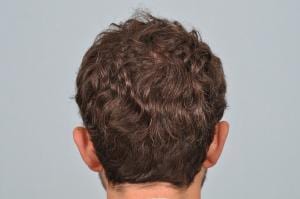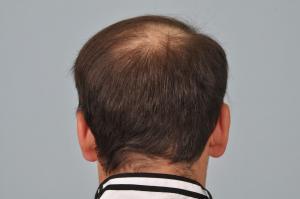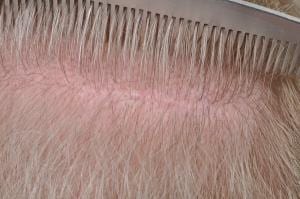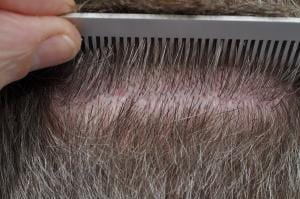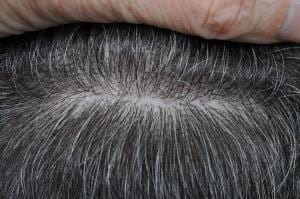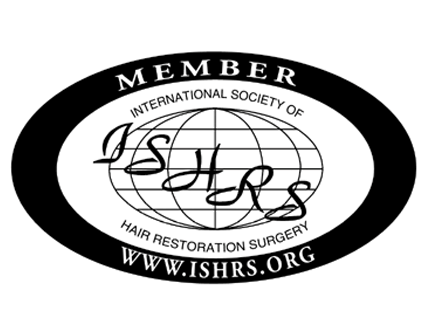Many patients when considering hair transplant surgery are interested to know if they will be left with scarring following the procedure. The answer to this question is simply yes. A scar is your body’s way of healing following an injury.
Be wary of any clinics offering “scar-less surgery” as this is not possible.
How noticeable the scar is following the procedure is down to a number of factors including the technique used to remove the hair from your donor area, the length of your hair following the procedure, your own body’s tendency to scar and most importantly the skill of the surgeon carrying out your procedure.
FUT or FUE and Hair Length
There are currently two methods of removing the hair from the donor area around the back and sides of your scalp. Follicular Unit Transplantation “FUT” or strip method and Follicular Unit Extraction “FUE”.
FUT Hair Transplant Scars
An FUT hair transplant involves a small section of hair bearing skin being removed from the donor area, this is then dissected down to its individual hair grafts to then be transplanted into the areas of thinning or baldness. When carried out by a skilled surgeon, most patients will be left with a fine pale linear scar in the donor region following this technique. This scar is normally completely concealed with approximately 2-3 centimetres of length in the patient’s hair in this area.
FUE Hair Transplant Scars
With the FUE hair transplant technique each individual hair graft is removed one by one from the donor area. Patients are therefore left with small circular scars where the hair has been removed. In this method the amount of scarring is greater however as it is spread out over a larger area it is often less noticeable and patients can trim their hair shorter in the donor area following the FUE procedure.
Scarring in Future Hair Transplant Surgery
In the FUT procedure should a patient return for further transplantation in years to come a skilled surgeon can remove the original linear scar and thus the surgeon will leave the patient with only one linear scar. In the FUE technique this is not possible and a scar is created for each graft taken.
As the incisions in the recipient (thinning) areas, where the hair is placed, are very small, any scarring in this area should be completely undetectable to the naked eye when carried out by an experienced team.
How Scars Heal and the Skill of the Surgeon
The surgeon makes the incision but the patient’s body heals by forming a scar. This is how skin heals following any form of injury. The degree of scarring will depend on the patient’s unique individual healing characteristics. In general, young men who have very elastic skin will have a very slightly wider scar than older individuals where there is less elastic tissue and the scar tends to be finer.
Some patients will be prone to a type of scarring commonly known as keloid scarring. In these patients the skin heals by forming a raised scar which is noticeable. Therefore, for patients that have a history of keloid scarring hair transplantation is usually not recommended.
The degree of scarring will also be affected by the skill and expertise of the surgeon and their team when carrying out your procedure. When someone poorly qualified carries out a hair transplant, often the patient can be left with unacceptable scarring in the donor and even the recipient areas.
When the procedure is carried out by a skilled team and the patient heals normally, then only a fine pale linear scar, in FUT procedures, or small pale circular scars, for FUE procedures should be left. These should be completely covered by the patient’s own hair.
Hair Transplant Scars Post-Operatively
Below are images of several HRBR patients. The images show the donor area once it has healed and the degree of scarring experienced by each patient following hair transplant surgery at HRBR.
FUE Procedure post-operatively
FUT Procedure Post Operatively
If you are considering hair transplant surgery and would like to arrange an appointment at HRBR, please contact us at +353 1 209 1000.



